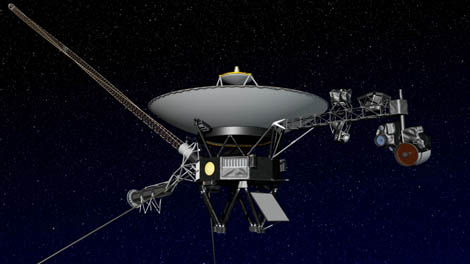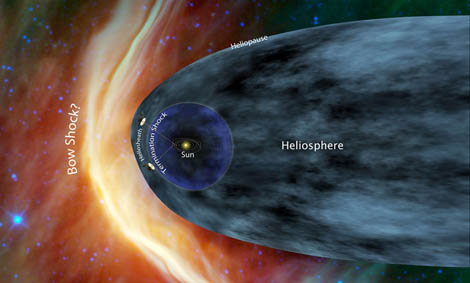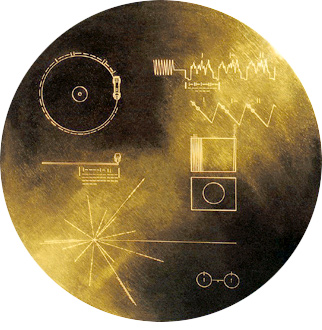 35 years ago the Voyager 2, exactly on August 20, 1977. This probe and its “twin sister”, the Voyager 1 (released on September 5, 1977), after having explored for the first time, the giant planets (Jupiter, Saturn, Uranus and Neptune) are today at the limits of the Solar System, being the “technological objects” farthest from the Earth ever made by Man.
35 years ago the Voyager 2, exactly on August 20, 1977. This probe and its “twin sister”, the Voyager 1 (released on September 5, 1977), after having explored for the first time, the giant planets (Jupiter, Saturn, Uranus and Neptune) are today at the limits of the Solar System, being the “technological objects” farthest from the Earth ever made by Man.
A Voyager 1, which advances into interstellar space at a speed of 17 km/s (61 200 km/h), is about 120 times the distance from Earth to Sun. Voyager 2, traveling at 15,4 km/s (55 440 km/h), is more than 98 times the distance from Earth to Sun.
In this exploration, whose 35th anniversary is now commemorating, the probes carry with them information about life on Earth, aimed at other lives in space: the famous “golden disk” which contains greetings in 55 terrestrial languages, 155 images of our planet, as well as 90 minutes of “human music” and sounds from the biosphere.

Landmarks of space exploration, after having sent the first technologically “modern” images of the four giant planets and their moons (some discovered by these probes) continue to contribute to the knowledge of the solar system.
The probes communicate weekly with the control center at the Jet Propulsion Laboratory (JPL) in Passadena, California, via radio signals captured by the "Deep Space Network" (http://deepspace.jpl.nasa.gov/dsn/).
The data sent, for example by the Voyager 1, take, at the current distance, around 16 hours and 40 minutes to reach the network of large antennas installed in three places on planet Earth (Goldstone, California, near Madrid, Spain, and near Canberra, Australia).
And they will continue to explore and send messages about space on their way to the stars, at least until 2025, when the three thermoelectric radioisotope generators (electricity is generated from the decay of several units of plutonium-238) should silence… But your missions and achievements will remain uplifting in the memory of space exploration.

Author Antonio Piedade
Science in the Regional Press – Ciência Viva


















Comments